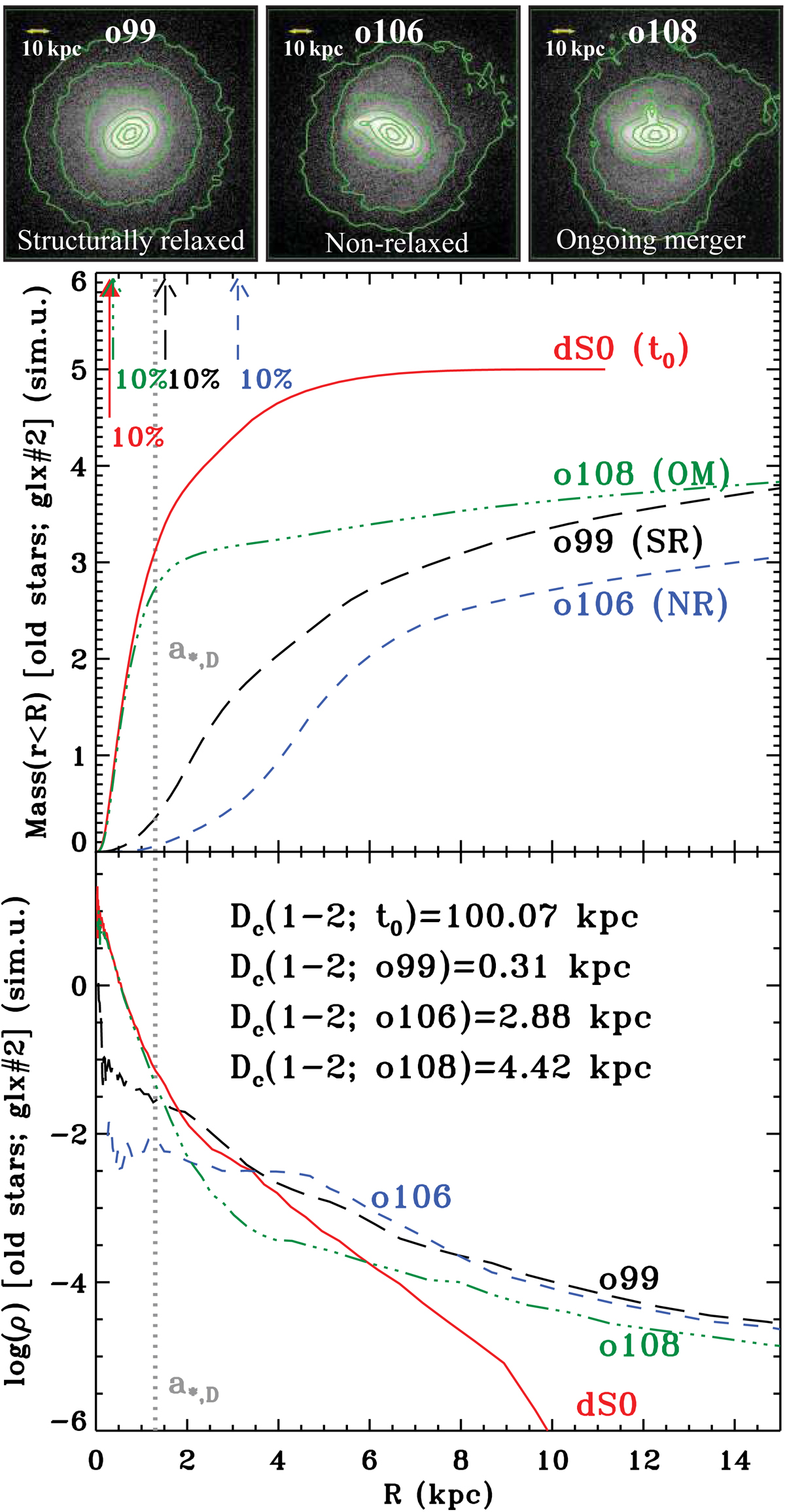Fig. 2.

Radial profiles of the accumulated mass within each radius (middle panel) and volume density (bottom panel) of the old stellar content of the dwarf in the remnants of three gS0+dS0 minor-merger experiments with different orbits, compared to the original profile of the dS0 (red solid line). The remnants present different relaxation levels according to the criteria exposed in Sect. 3.2: an ongoing merger (orbit #108, green dotted-dashed line), a non-relaxed system (#106, blue short dashed line), and a fully merged and structurally relaxed remnant (#99, black long dashed line). The arrows in the top panel indicate the radius containing 10% of the initial stellar mass of the satellite in each case (see the legend). The vertical grey dotted line indicates the disc scale-length of the dS0 (a⋆,D). Although the accumulated mass at this radius is <10% in orbits #106 and #99, the distance between the centroids of the stellar content of each progenitor is >a⋆,D in the remnants of #106, so it is not relaxed (bottom panel). However, it is lower in the remnant of the orbit #99, thus being structurally relaxed. In #108, neither the mass accumulated at a⋆,D is <10% nor the distance between the centroids is <a⋆,D, hence it is an on-going merger. This classification is consistent with their morphologies in their face-on V-band mock images (top panels).
Current usage metrics show cumulative count of Article Views (full-text article views including HTML views, PDF and ePub downloads, according to the available data) and Abstracts Views on Vision4Press platform.
Data correspond to usage on the plateform after 2015. The current usage metrics is available 48-96 hours after online publication and is updated daily on week days.
Initial download of the metrics may take a while.


